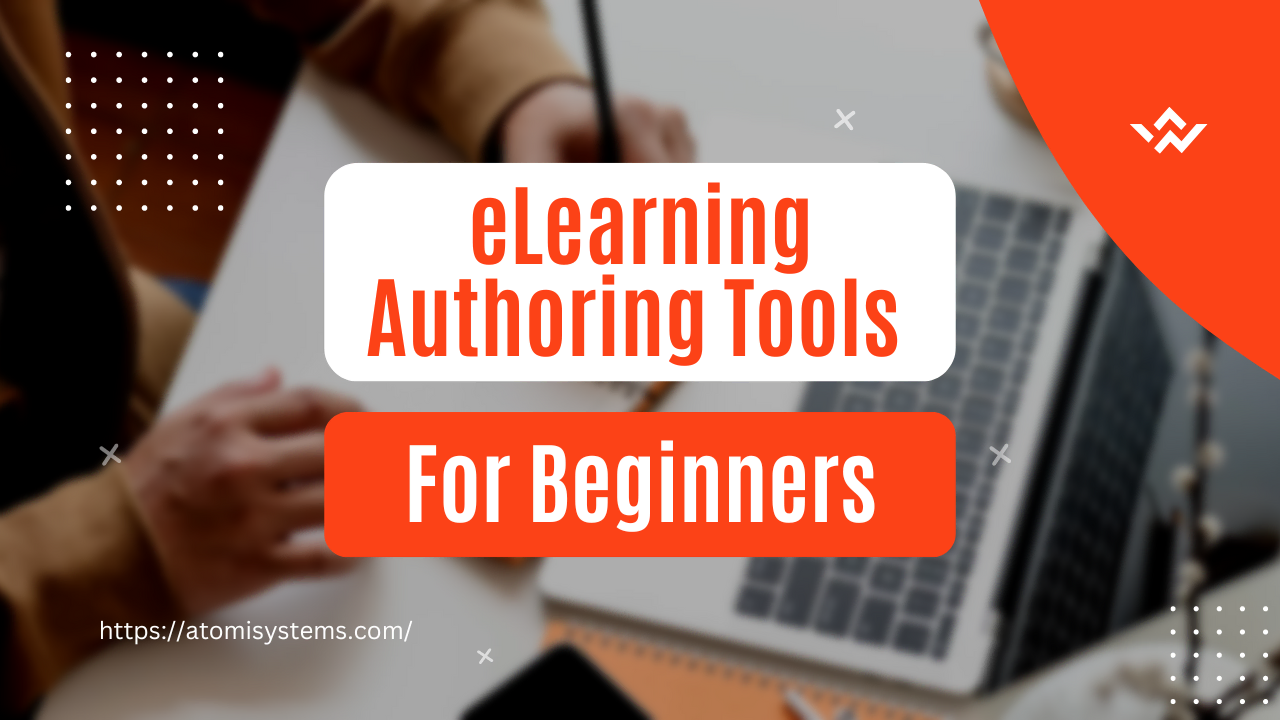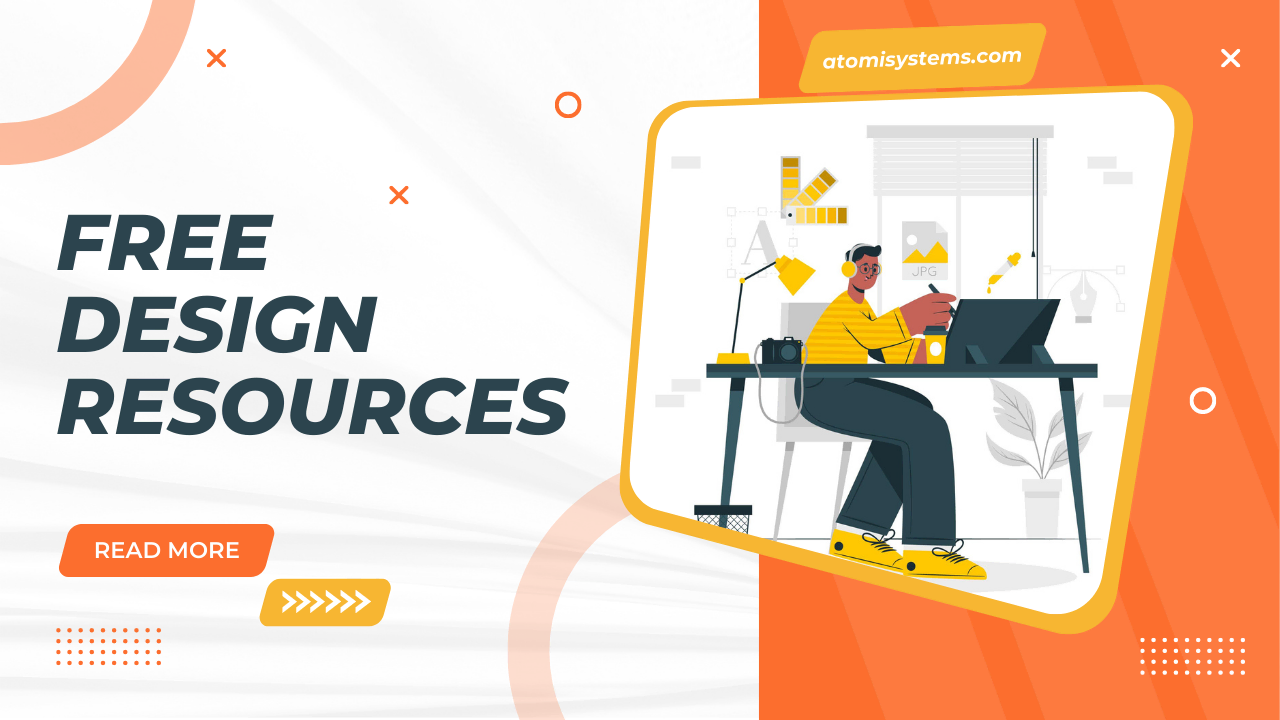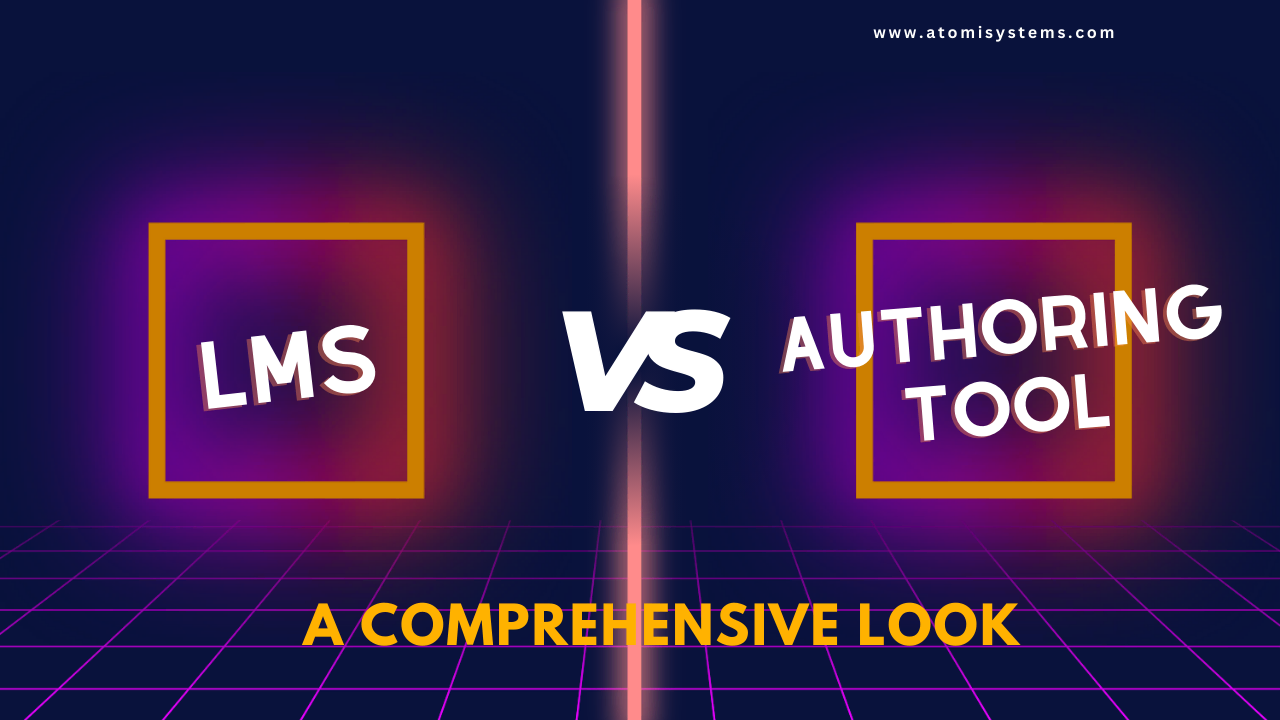Learning design books guide you through how to craft educational experiences that captivate, motivate, and leave a lasting impact.
Learning design books offer a gateway to mastering the art of creating impactful educational experiences. They go beyond theory, providing practical insights and real-world scenarios that help bridge the gap between knowledge and application.
With clear, actionable steps, these books guide you through designing courses, workshops, and learning environments that truly engage and educate.
For instructional designers looking to put these principles into practice and create truly engaging and interactive learning modules, a powerful eLearning authoring tool is essential. In this regard, ActivePresenter stands out as a great option, offering a wide array of features to bring your instructional design visions to life.

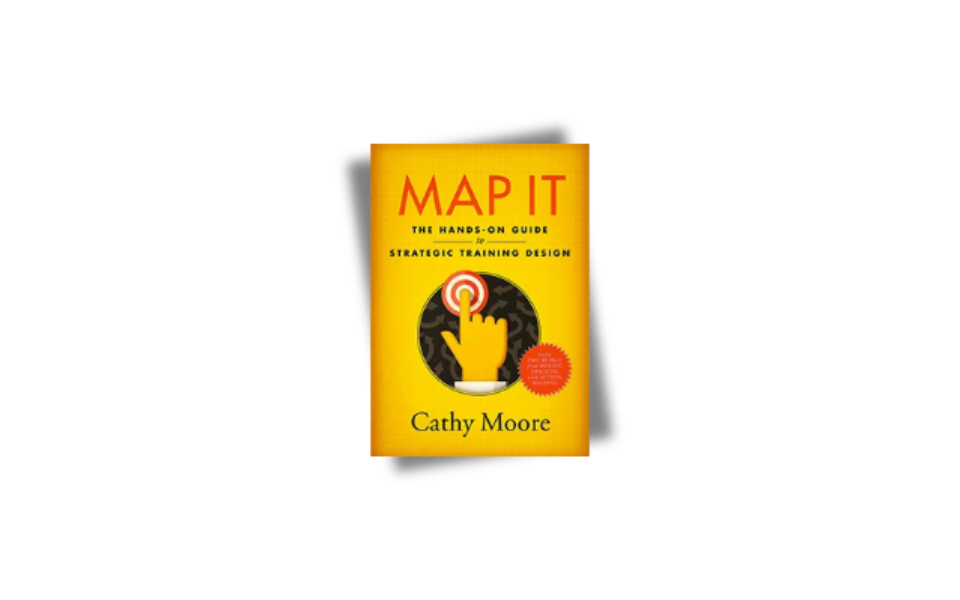
Whether you’re new to the field or looking to refine your skills, these books will help you turn ideas into practical results.
1. Map It!
Any learning designers should add the book Map It: The Hands-On Guide to Strategic Training Design to their reading list.
You’ll discover how to pinpoint the root causes of performance issues and assess whether training is the right solution.

The book emphasizes creating realistic, interactive activities focusing on practical skills rather than theoretical knowledge.
💡When learners see the relevance of the training to their work, they’re more motivated to participate, absorb the information, and put it into practice
The book introduces action mapping as a visual aid to discover performance issues and address them with business goals training. In other words, by prioritizing the final goal, action mapping prevents learners from being overwhelmed with unnecessary information. You can refer to the action mapping application in the real case study from this learning design book.
Key Takeaways
Strategic Training Design: Design effective training programs that align with business goals.
Root Cause Analysis: Identify the underlying causes of performance problems and determine if training is indeed the best solution.
Interactive Activities: Create practical training activities that focus on skill development rather than theoretical knowledge.
Format Selection: Choose the most appropriate training format (online, group-based, or on-demand) to ensure seamless integration into the workflow.
Action Mapping: Analyze performance issues and determine the effectiveness of training interventions.
2. Make it stick
“Make It Stick: The Science of Successful Learning” is a must-read for anyone interested in effective learning strategies. The book debunks common myths about learning and provides evidence-based techniques to enhance long-term retention and understanding.
The authors challenge traditional study methods, such as re-reading, and emphasize the importance of practices like retrieval, which involves recalling information to strengthen memory. They also highlight the benefits of spacing and interleaving, showing how mixing up learning sessions can lead to better retention.
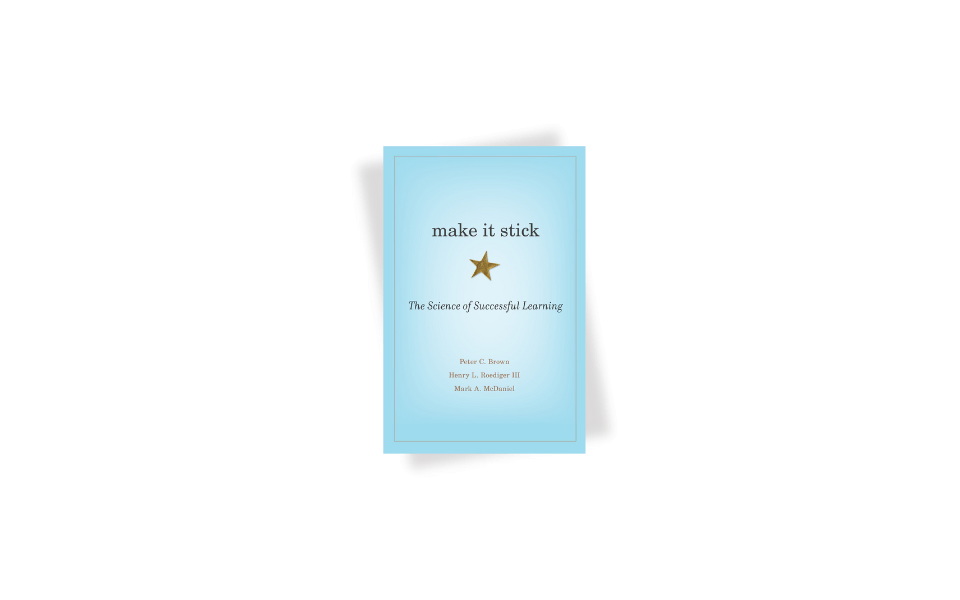
The book advocates embracing difficulties and making errors during learning, as these challenges can significantly enhance understanding. It also addresses common pitfalls like the “illusions of knowing,” where learners mistakenly believe they have mastered material due to ineffective study techniques.
Moreover, Make It Stick dispels the myth of learning styles, arguing that universally effective strategies, such as retrieval practice, outperform individualized approaches. It encourages a growth mindset, promoting the idea that intelligence and learning abilities can be developed through persistent effort and embracing challenges.
Overall, Make It Stick is a compelling guide for anyone seeking to optimize their learning process, offering practical advice grounded in scientific research.
Key Takeaways:
Retrieval Practice: Actively recalling information is more effective than simply rereading. Test yourself frequently, even if it’s just mentally.
Spaced Repetition: Spread out study sessions over time rather than cramming. This helps solidify information in long-term memory.
Interleaving: Mix up different topics or skills during study sessions to improve understanding and retention.
Elaborative Encoding: Connect new information to what you already know. Create mental images, analogies, or stories to make the material more meaningful.
Desirable Difficulty: Embrace challenges that push you to your limits. Struggling to learn something can enhance retention.
3. Design for How People Learn
This book is a great start for newbies coming into the field of instructional design. It emphasizes the importance of understanding how people learn to design effective educational materials.
Julie Dirksen breaks down complex cognitive science concepts into easily digestible insights, making the book accessible to both beginners and experienced professionals.
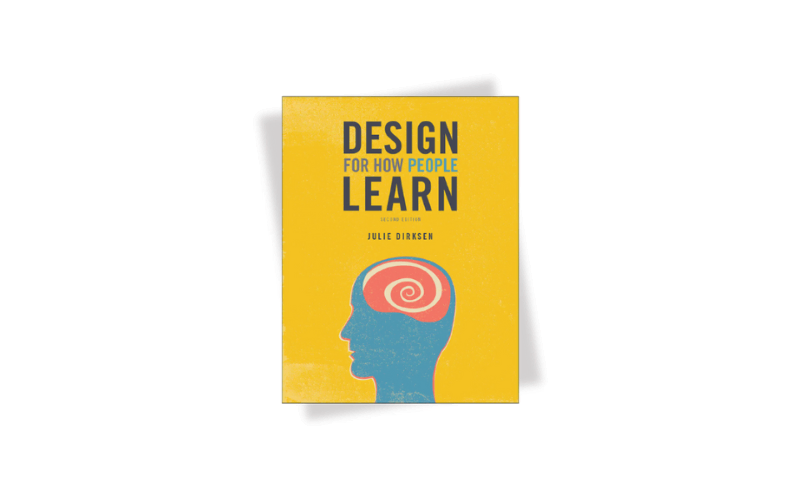
One of the key highlights is the focus on aligning instructional design with learning experience. That is, the author discusses how memory, attention, and motivation play critical roles in learning and provides practical strategies for leveraging these elements.
The book also explores the significance of user-centered design, encouraging designers to consider the learner’s perspective, prior knowledge, and learning environment.
💡What makes for a great learning experience is not about the content, but about the way the content is taught.
The content follows the introduction and solution for 6 learning gaps causing interruption. For details, you can refer to Learning gaps: Why Can’t Your Learners Apply What They Have Learned?
Another interesting aspect of this book is it is backed by science with procrastination explanation, why we often get distracted and how to act on it. This leads to the birth of the following book in this list: Talk to the Elephant.
Filled with real-world examples, this book for learning designer offers essential strategies for designing engaging and effective learning experiences
Key Takeaways
Learner Goals: Align learning experiences with learners’ specific goals and objectives.
Learner Context: Consider the learner’s environment, experiences, and knowledge when designing learning.
Feedback: Provide timely and constructive feedback to help learners improve.
Assessment: Use a variety of assessment methods to measure learning outcomes.
4. Talk to the Elephant
The “Elephant” can be considered as the part of our brain that enjoys immediate happiness, or low-hanging fruit. We talk with the “Elephant” every day in our mind, from continuing to sleep or wake up, to putting the phone down or starting working.
In the meanwhile, the “person” having the mind talk with “Elephant” is called the Rider. The Rider represents our rational thinking, which strives for excellence, for growth and often reminds us to do the “right” thing – learning, studying, or working.
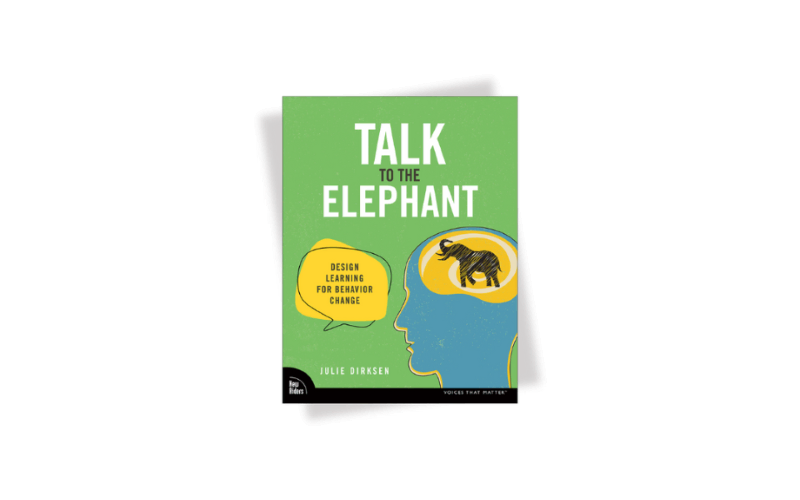
Talking to the Elephant, from its name, reveals the way learning designers can apply to direct the Elephant into a way of working harmoniously with the Rider.
Rather than expanding on giving knowledge and ideas about 6 learning gaps, this book digs deep into learning in motivation and behavior. In this way, it sheds light on how to design the curriculum effectively while keeping learners’ attention and quality.
Key Takeaways:
Influencing the Elephant:
- Habitualization: Make desired behaviors into habits by creating routines and triggers.
- Social Proof: Leverage the power of social norms and peer pressure to encourage change.
- Emotional Appeal: Connect with the elephant’s emotions to motivate action.
Working with the Rider:
- Provide Clear Direction: Help the rider understand the desired outcome and the path to get there.
- Address Concerns: Anticipate and address the rider’s doubts and objections.
- Offer Support: Provide resources and tools to help the rider implement changes.
5. Telling Ain’t Training
“Telling Ain’t Training” is a comprehensive guide for trainers seeking to elevate their skills and create more effective, learner-centered training sessions. This learning design book expands edition goes beyond the basics, incorporating the latest advancements in technology and e-learning to address the evolving needs of adult learners.
The book introduces new methods for designing engaging and interactive training programs, backed by extensive evidence and research that support its practical approach.
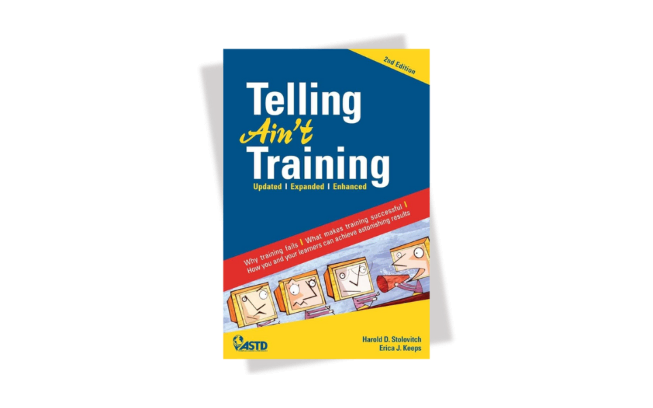
Trainers will find valuable guidance on how to retrofit their existing materials, ensuring they align with the principles of adult learning. The expanded content includes detailed explanations of these principles, helping trainers understand and apply them more effectively.
Whether you’re a novice or an experienced trainer, Telling Ain’t Training provides the insights and resources needed to improve your training programs and achieve better outcomes with your learners.
Key Takeaways
Chunking: Break down complex information into smaller parts.
Self-Directed Learning: Encourage learners to take ownership of their learning.
Experience-Based Learning: Leverage learners’ prior knowledge and experiences to facilitate learning.
6. A Designer’s Log – Case Studies in Instructional Design by Michael Power
Michael Power’s A Designer’s Log: Case Studies in Instructional Design serves as a comprehensive reflection on the author’s experience in applying instructional design principles to online and blended learning at a dual-mode university.
The core of the book features 10 case studies where Michael Power documents his three-year journey assisting faculty in adopting this model for distance education. He highlights the importance of a tailored, respectful approach that honors institutional traditions while encouraging a shift to online teaching. The final section synthesizes the lessons learned and presents a refined prototype model.

Michael Power’s work is praised for its thoughtful insights and practical recommendations, making it a valuable resource for educators and instructional designers aiming to improve their practice in online and blended learning environments.
Key Takeaways
Iterative Design: Instructional design is often an iterative process, involving continuous evaluation and improvement.
Feedback Loops: Gathering feedback from learners and stakeholders is essential for refining instructional materials.
Storyboarding: Visualize the flow of instruction and ensure a coherent learning experience.
7. The eLearning Designer’s Handbook
This instructional designer book is a practical guide for those involved in creating eLearning content from baby steps. It covers working with stakeholders to deliver courses to learners.
Tim Slade also started from scratch when being given the first task to create an eLearning course as revealed in his eLearning designer handbook’s author note. He shares his expertise in a clear and accessible way, making this book a go-to resource for anyone looking to improve their skills in eLearning design.
The book provides a structured approach to eLearning design, walking readers through each phase of the process—from planning and storyboarding to development and implementation.
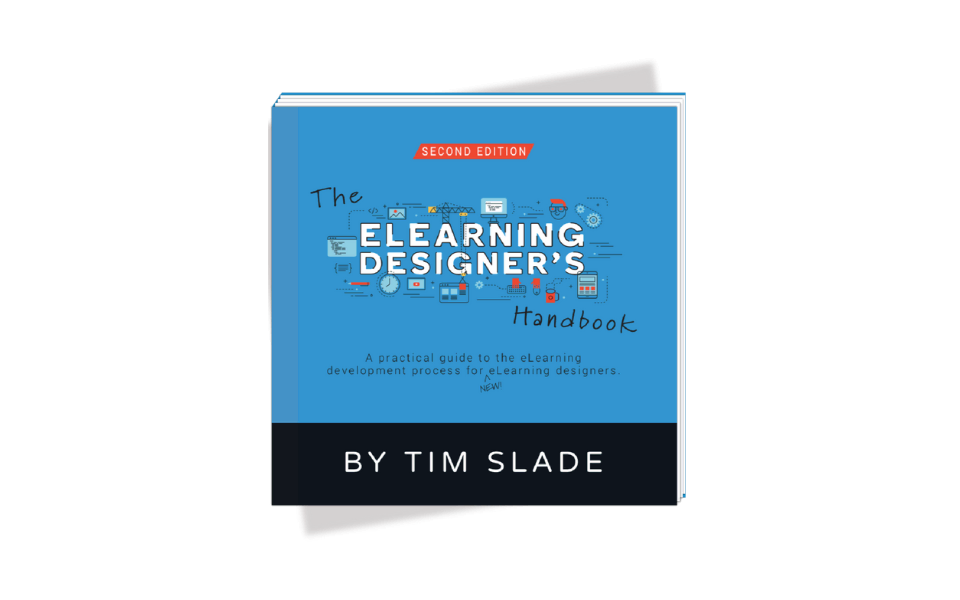
A significant emphasis is placed on working effectively with stakeholders and subject matter experts. The book highlights the importance of communication and collaboration in the success of eLearning projects.
The book encourages designers to always consider the needs and experiences of the end-users, ensuring that the eLearning content is not only educational but also engaging and accessible.
Key Takeaways
Project Management: Effectively manage the development and implementation of eLearning courses.
Learning Management Systems (LMS): Utilize LMS platforms to manage course delivery, track learner progress, and facilitate communication
Multimedia: Incorporate a variety of media types, such as videos, audio, and images, to present information in different ways.
Authoring Tools: Choose appropriate authoring tools to create and deliver your eLearning courses.
💡 We provide ActivePresenter eLearning authoring tool to create interactive eLearning courses working seamlessly with almost all LMSes. Have a look at ActivePresenter and see what we bring to the table.

8. Learning Science for Instructional Designers: From Cognition to Application book by Clark N. Quinn
This book bridges the gap between theory and practice by distilling complex learning science concepts into actionable insights that can be directly applied to instructional design.
The author brings his extensive knowledge of cognitive science to help instructional designers understand the mechanics of how people learn and how to leverage this understanding to design better educational experiences.
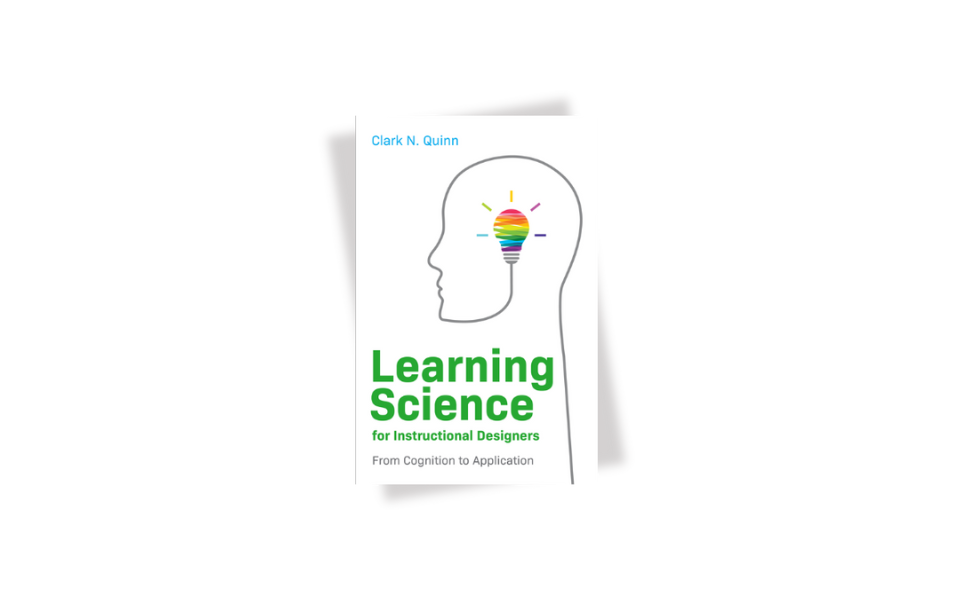
To be more specific, it provides a comprehensive overview of key principles in learning science, such as cognitive load theory, spaced practice, and the role of motivation in learning. Clark stresses the need for instructional designers to create learning experiences that not only convey information but also ensure long-term retention and the ability to apply knowledge in real-world situations.
One of the unique aspects of the book is its practical focus. It includes prompts at the end of each chapter, encouraging readers to reflect on how the concepts discussed can be incorporated into their work.
Thus, this reflective approach helps to deepen understanding and facilitates the practical application of learning science principles in instructional design projects.
Key Takeaways
Neuroscience: Learn about the neural basis of learning and how brain activity influences learning outcomes.
Cognitive load: Minimize distractions and unnecessary information.
Interleaving: Mix up different topics or skills during learning to improve understanding and retention.
Last words
In wrapping up, learning designer books like Map It, Make It Stick, Design for How People Learn, and Talk to the Elephant offer invaluable insights into crafting effective learning experiences.
Whether you’re delving into the practical advice of Telling Ain’t Training or the real-world examples in A Designer’s Log: Case Studies in Instructional Design, these resources are essential for any instructional designer.
The eLearning Designer’s Handbook and Learning Science for Instructional Designers by Clark N. Quinn further deepen your understanding by connecting cognitive principles with practical application, making these books indispensable tools for creating impactful learning.
See also
